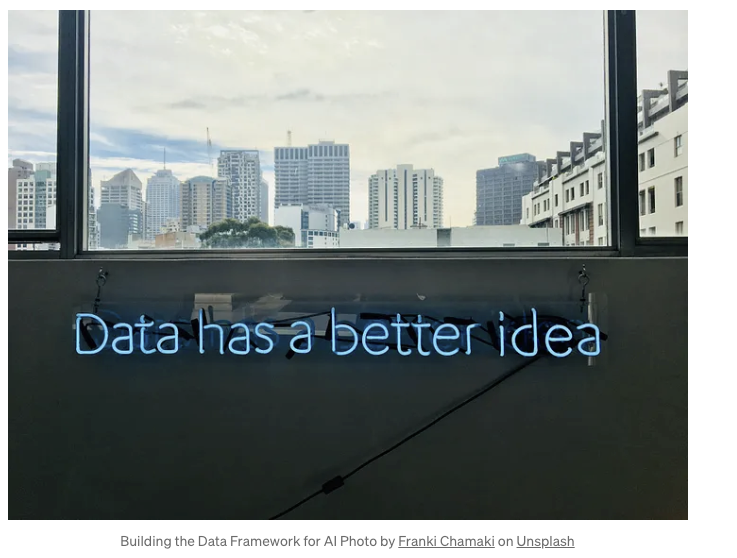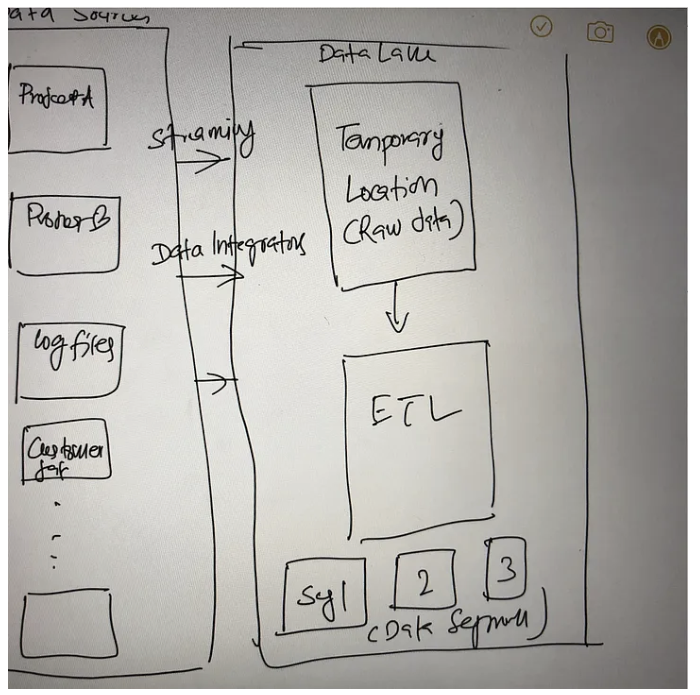
Enterprises are scrambling hard to take advantage of the advances in AI and inject AI into their products and services to generate business value for stakeholders. Enterprises are trying hard to solve all kinds of problems from improving customer satisfaction, personalizing search results,ad-auctioning, detecting frauds, promoting a brand, tagging photos, suggesting favorite movies, to detecting cancer, the list goes on. These are exciting times to be a technologist; at the same time, this is the Wild-West of AI. Every product is trying to put an AI sticker on it to make it more appealing. CXOs are all rightfully declaring that the future is AI. However, among all the hyped enthusiasm and exuberance, enterprises should take caution and build the right infrastructure to power their AI workloads to generate true business value at scale. This blog gives a high-level overview for all the CIOs, CTO’s and anyone responsible for transforming their company through AI.
Like any product or technology, success depends on targeting the right problem to solve, building the foundation to build the technology and infrastructure, and then making the technology available at scale to users and developers so that you can create that feedback loop and build an agile innovation framework. I will lay out a framework that should help enterprises think about taking advantage of AI.
The framework that I propose is based on 7 pillars 1. Problem Selection 2. Building the Data Infrastructure 3. Defining Data Governance Models 4. Exposing Data as a Platform 5. Model Selection 6. Exposing the final Models as APIs / Marketplace 7. Building a Feedback Loop and Iterating.
Let's define each of these pillars.
- Problem Selection: Not all problems are created equal. Targeting the right problems to solve makes or breaks the success of AI. The enterprise should list all the possible problems that AI could solve and prioritize them by ROI and Complexity. The ideal case would be to choose a problem with the highest possible ROI and lowest possible complexity. Its always recommended to start with something small, show progress and then move to more difficult problems. Always start small.
- Building the Data Infrastructure: The core of AI is data. You need to treat data as your core asset and build the right infrastructure to house and maintain that asset. There are many concepts such as “Data Lakes” that are implemented to build an end to end data-infrastructure. Data Lakes house and unify an entire company’s data from all sources. The success of your AI initiative depends heavily on choosing and building the right data infrastructure. All the major cloud providers build specific components for solving each segment of the data lake. There are also complete end-to-end solutions to build your data lake into the cloud. You will have multiple data sources and then plug those data sources into your data lake using technology such as streaming and data integration adaptors. Once the data is in the Data Lake, you can keep a raw copy, perform ETL, and then expose the transformed data for Analytics or ML use cases. You should have the capability to expose your data at various stages as a platform to your stakeholders who can use it based on their needs.

3. Defining Data Governance: Data governance is something that enterprises get wrong very often, leading to delays and legal issues. It would be best if you used IAM-based policies to ensure the right data is accessible to the right users. The general best practice is to have the Data generator be the owner and downstream user of the data, request and get permission based on the specific needs, and all controlled through enterprise access policies. All existing cloud providers have policy-driven data governance tools to solve this problem. Do not take this step lightly.
4. Exposing Data as a Platform: Once the data is collected, governed, and transformed, it should be available to all the stakeholders based on their needs. Data should be queryable and downloadable based on the use case. One example is using Oracle Autonomous DB or Google BigQuery to expose the data to various stakeholders.
5. Model Selection: Once the data is accessible, your Data scientists should now be able to use pre-built models or define and train their own models by integrating your data with ML notebooks such as Jupyter. Best enterprises expose their models internally and sometimes open source to take advantage of the community to help build models for various use cases. This is where the AI magic happens.
6. Exposing the final models as APIs: This is a step where most modern enterprises fail. Once your model is built, you should expose your models as REST APIs to your internal developers. This will allow your product teams to take advantage of your models and plug them into the company’s products. This also means you need to have proper documentation, developer guides, SDKs, and API Gateway to manage this. Doing this right will actually help you take advantage of your entire AI effort. You can also build a marketplace for your AI models, something that Google Tensorflow has done. This will help your AI models to be effectively distributed to your product and engineering teams.
7. Building a Feedback loop and Iterating: A feedback loop is key to ensure your innovation cycle is running fast. This is how you can beat your competition and improve fast. Building the right feedback mechanism at each stage is essential to ensure your models are improving. Feedback from the success rate of your models exposed through API, feedback from customers, feedback from the developer community, and feedback from infrastructure should all be put back into the system to understanding how the models are performing in the real world and keep iterating to improve.
There is no single silver bullet to take advantage of the success in AI. However, apart from all the items listed above, enterprises should build the right culture of innovation around AI. The right culture will ensure your team is set for success through the Ups and Downs of your Enterprise AI Journey. Keep building great stuff and change the world for the better!!!
Comments
Please login to comment.
dibyendu2
October 20, 2024 06:50This is a good one
dibyendu
October 20, 2024 06:50Thanks
dibyendu
November 01, 2024 01:31you are great